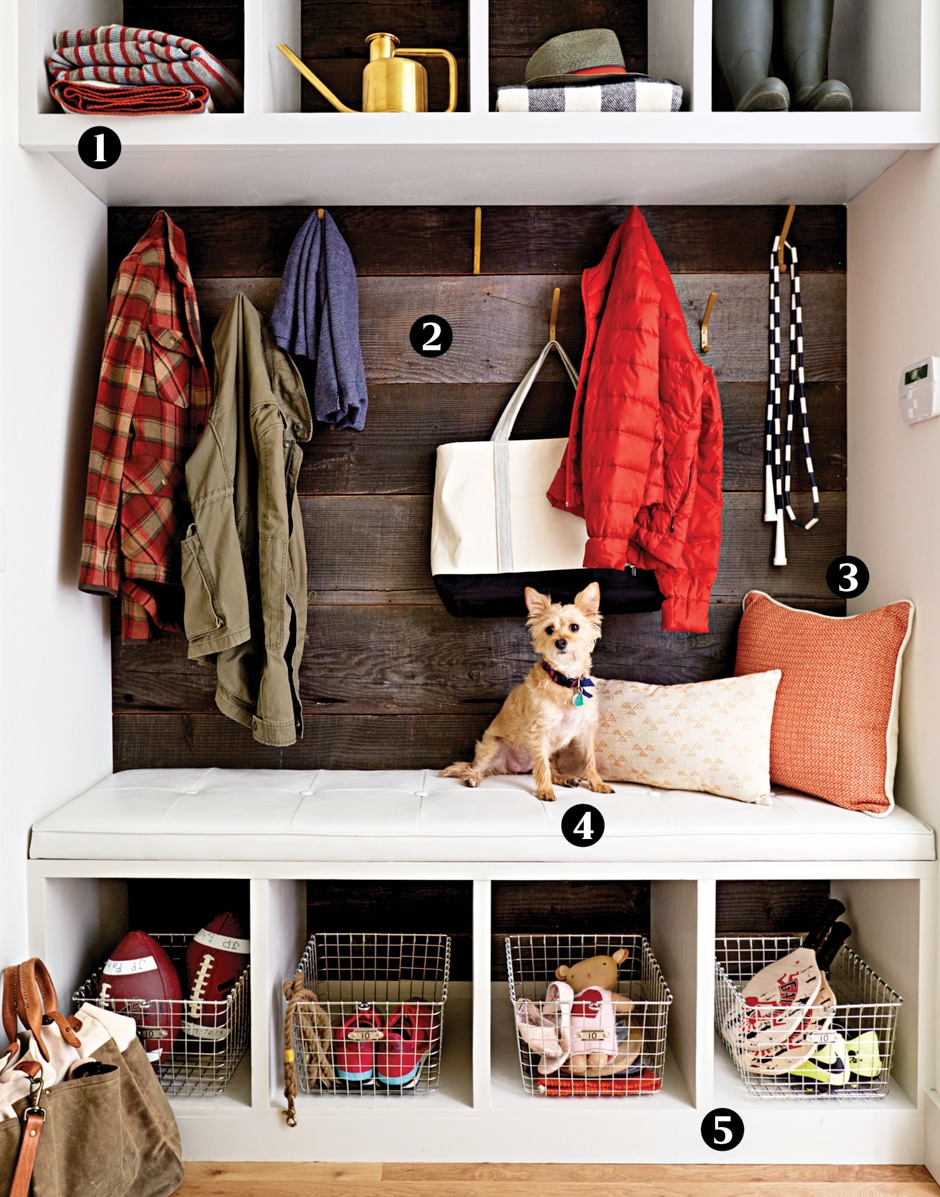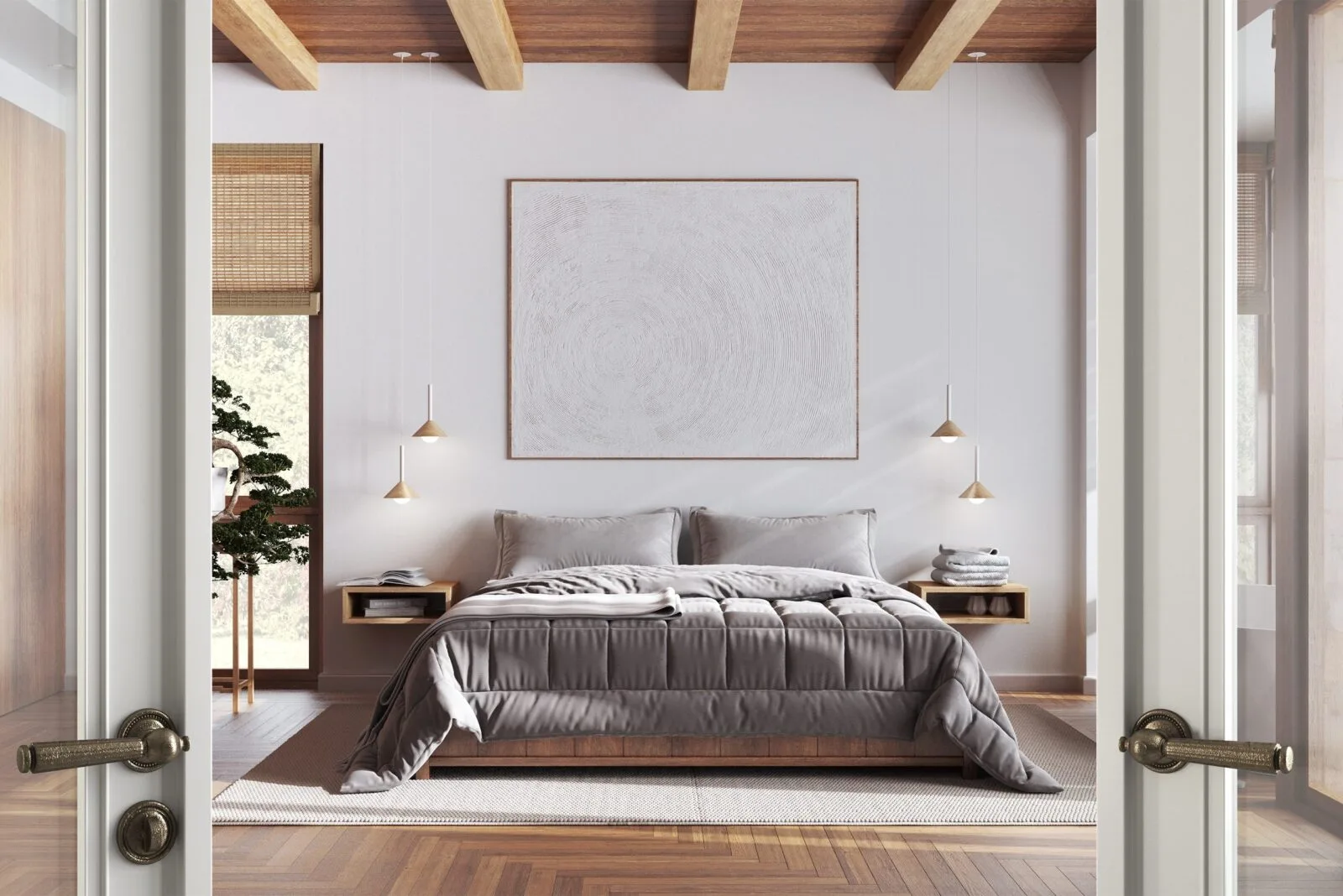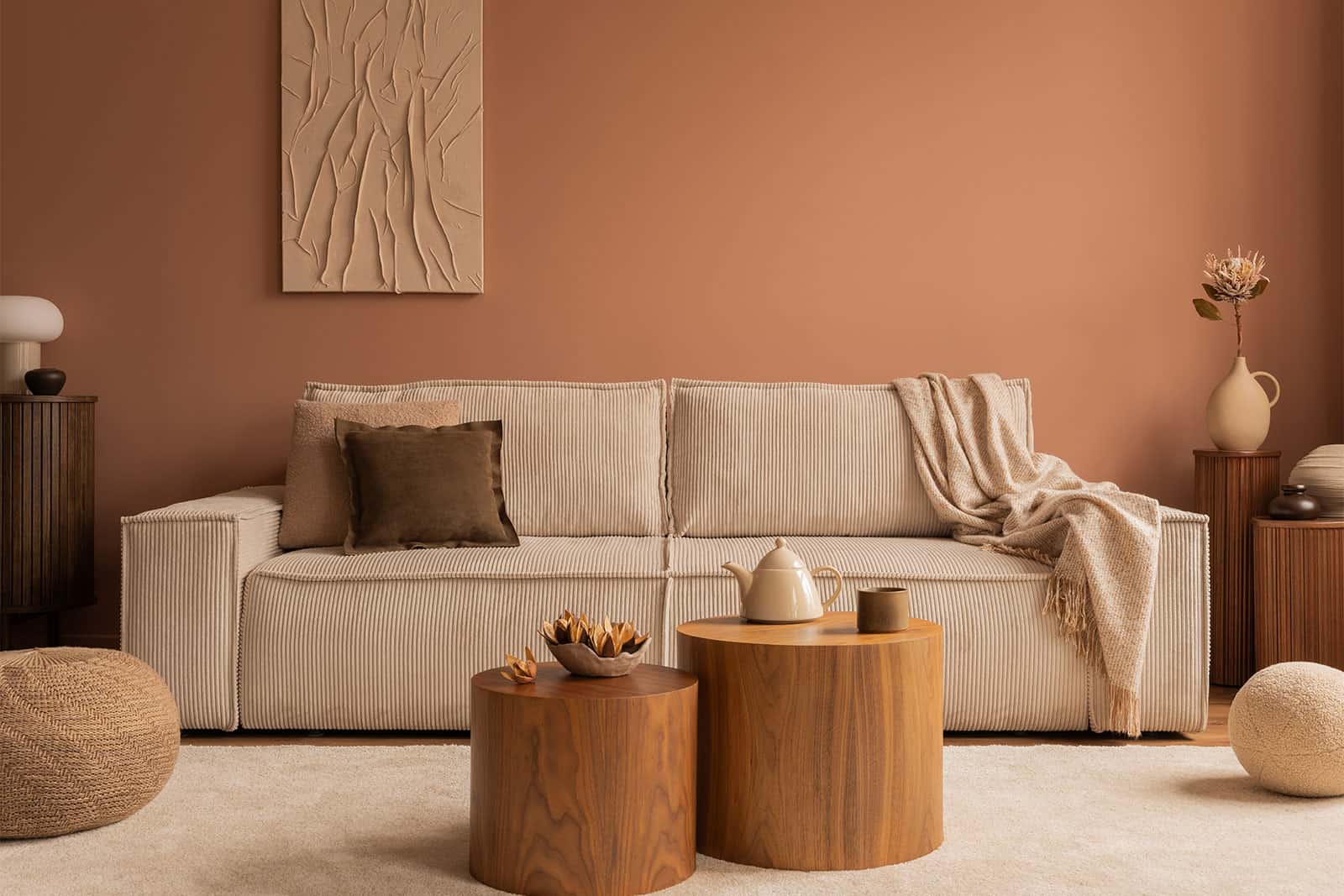Anatomy of A Faux Mudroom
One of your house’s hardest-working spaces, a well-designed entryway with mudroom-style storage should be organized, easy to clean (no dainty materials here!), and ready to accept all those snowy boots, damp umbrellas, outdoor toys, and muddy paws.

1. Seasonal Storage
Extra shelving above your seating area is perfect for seasonal things you don’t need access to all the time—and high storage will keep stuff out of reach of little hands. From picnic blankets to gardening tools to bubble machines, this space is reserved for things you only really need on your way out the door.
2. A Place to Hang Out
Add staggered hooks near your seating for leashes, coats, masks, and bags. If you’ve got kiddos and want to keep things even more organized, try nameplates on each hook—just make sure they can reach!
3. Mixed Materials
Functionality is important for a mudroom, but don’t forget to have fun with the design, too. A colorful coat of paint, an accent wall using a different material (as seen here), or a washable statement rug will keep things from getting too businesslike.
4. Take a Seat
First and foremost, a mudroom needs enough seating for at least a couple of people at a time to take off or put on shoes. Bench seating is a no-brainer; just make sure any cushions are durable, ideally in indoor-outdoor or performance fabric.
5. Basket Case
Having storage baskets or crates under your seating is an easy way to keep outside stuff corralled into individual cubbies. (Fun fact: Shoe-free homes are safer and healthier. Not fun: Tripping over shoes as you enter yours.) Label baskets so no one of reading age or older can plead ignorance about what goes where.
By Hannah Baker | Photograph by David Tsay



